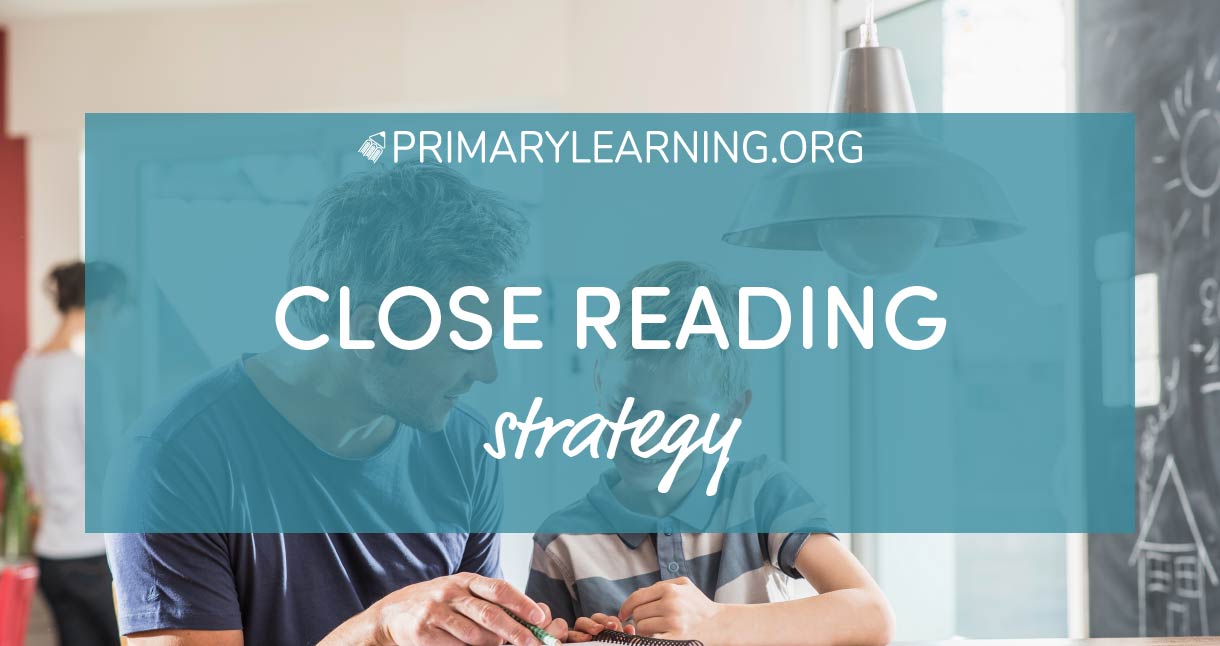

Posted by: Alesia Netuk
Updated: September 28th, 2023
What Is Close Reading?
What Is Close Reading?
Close reading is an instructional strategy where a text is read multiple times, for the purpose of uncovering deeper meaning. Emphasis is placed on analyzing the text, beyond simple recall questions. It can be likened to peeling back layers of an onion. Educators must carefully select texts for close reading, looking for those with rich vocabulary, complex ideas, and thought-provoking messages. Close reading can be introduced in kindergarten and continue to be used throughout older grades.
Introducing Close Reading
In kindergarten, close reading can be introduced through teacher read alouds. The texts chosen have to be complex enough to lend themselves to being re-read over multiple days, with a specific purpose set for each read. For beginning readers, having the text read aloud by the teacher is an effective way to begin incorporating close reading into their literacy program.
The teacher determines the purpose for each close reading, and whether the whole text or specific portions of the text should be read aloud. On the first day, the teacher may choose to read the text in its entirety and for students to listen for enjoyment. This first read may include straightforward reading strategies such as having students tap into their prior knowledge about the topic, discussing the big events in the story, and sharing their opinions of the text.
During this read or the second read, the teacher may choose “text-dependent questions,” which are carefully crafted questions that require students to use evidence from the book to explain their responses. For example, questions may be posed about the text’s big ideas or about the problem and solution.
The next day, the same book, or portions of the book, is read aloud again. Students are cued to listen for a specific purpose. This process is repeated over several days.
In older grades, where students have become more proficient readers, close reading can still be done through read alouds, guided reading, and independent reading. Teachers need to select texts at students’ instructional level to access the texts and explore their deeper meaning.
Setting the Purpose
Teachers need to determine a clear purpose for each close reading and share this purpose with students. There is a multitude of areas teachers can choose to focus on, as they facilitate a deeper examination of texts. To support language development, teachers may focus on taking a closer look at challenging vocabulary. Students can be cued to listen for words they find “tricky” in a certain passage, sharing their findings afterwards. Or, teachers can give students specific words they want students to listen for and to think about their meaning when heard within the context of the text.
Depending on students’ age and ability level, determining the meaning of new vocabulary may take place through discussions, either with the whole group or with a partner. More proficient readers may look up definitions on an electronic device and share their findings. They may also use their own copy of the text to use context clues, like re-reading the sentences around the unknown word, to predict its meaning.
Close reading can be used to explore a variety of comprehension strategies. It is a great instructional strategy for going beyond simple recall questions. For example, students may be cued to listen for the author’s purpose. They may be asked to describe the story from the perspective of a specific character. Close reading can help students develop an understanding of inferencing, as they listen for implied versus stated information in a text. Students can be asked to read to discover the important message we learn from the text or what the text inspires us to do.
They may be cued to think about what questions they still have after the text concludes or what wonderings they experienced throughout the story. Teachers may choose to have students complete these activities orally, using strategies such as “turn and talk” or “think, pair, share.” Alternatively, teachers may ask students to record their thinking in writing, using blackline masters or reading journals.
Close reading can be incorporated into collaborative learning. Small groups of students can be formed, and groups can re-read the text with a specific purpose in mind. Students may use materials such as highlighters and sticky notes to record their thinking. For developing readers, the teacher can read the text aloud, then have small groups of students meet afterward, working towards a common goal. For collaborative learning to be effective, all students need to participate, share their ideas, and pose questions to their classmates. The goal is for all group members to walk away with a deeper understanding of the text.
Benefits of Close Reading
Unlike other components of reading programs, close reading requires that a text be read more than once. This process provides opportunities for students to explore the text in several ways, including enjoyment, deepening their understanding, and collaborating with others. Close reading does not overwhelm students with multiple questions and instead allows them to slow their pace, visit a text more than once, and cue into specific purposes.
Short reading passages for comprehension practice:
Close reading allows teachers to share a wide variety of texts with students from many genres. It also provides the benefit of encouraging students to engage in purposeful conversation in both whole group, small group, and partner settings. For students who require extra support, close reading is advantageous because they have the opportunity to visit a story more than once. Close reading is done in the form of read alouds also allows all students to participate, even those who may struggle to read the text independently. It is an effective instructional tool for promoting the use of critical thinking.
LEARNING MATERIALS TO MEET EVERY CHILD’S NEEDS
Here, at PrimaryLearning.Org, we tend to deliver the best-differentiated learning materials to K-2 students. Our resources can be easily incorporated into multisensory lessons to meet every child’s needs, whether s/he is a visual, kinesthetic, or auditory learner.